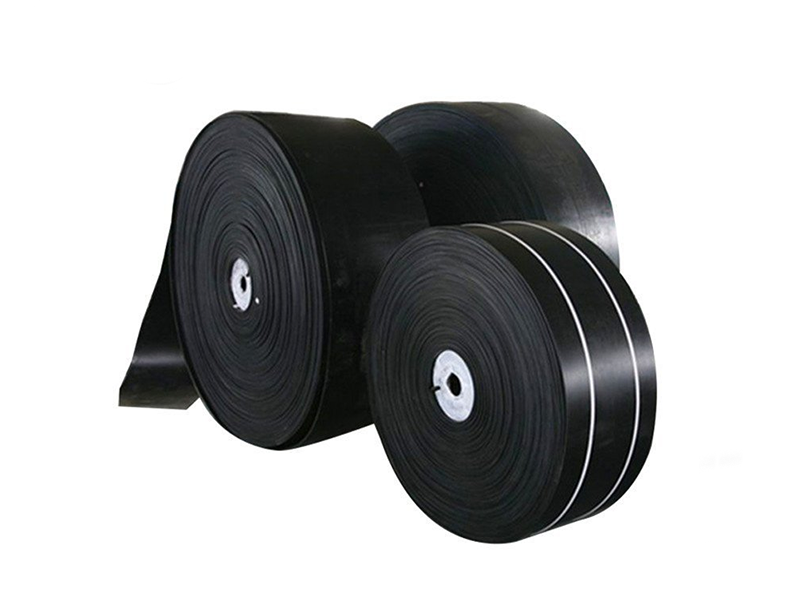What are the safety precautions when working with conveyor belts?

Safety Precautions When Working with Conveyor Belts
Conveyor belts are widely used in various industries for transporting materials from one location to another. While they offer efficiency and convenience, working with conveyor belts can also pose significant safety risks if proper precautions are not taken. This article aims to outline the essential safety precautions that should be followed when working with conveyor belts to ensure the well-being of workers and the smooth operation of the conveyor system.
1. Proper Training
One of the most critical safety precautions is ensuring that all personnel who work with conveyor belts receive proper training. Workers should be trained on the operation, maintenance, and potential hazards associated with conveyor belts. Training should cover topics such as:
Understanding the conveyor system components and their functions.
Safe start-up and shut-down procedures.
How to recognize and respond to emergencies.
Proper lockout/tagout procedures to prevent accidental startup during maintenance.
The importance of wearing appropriate personal protective equipment (PPE).
2. Personal Protective Equipment (PPE)
Workers should always wear the appropriate PPE when working near conveyor belts. This may include:
Safety helmets to protect against falling objects.
Safety glasses or goggles to protect the eyes from debris.
Earplugs or earmuffs to protect against noise.
Steel-toed boots to protect the feet from heavy objects.
Gloves to protect the hands from sharp edges and pinch points.
High-visibility vests to ensure workers are easily visible in the work area.
3. Regular Maintenance and Inspections
Regular maintenance and inspections are crucial for identifying and addressing potential safety hazards before they cause accidents. Conveyor belts should be inspected daily for signs of wear, damage, or misalignment. Key components such as rollers, bearings, and pulleys should be checked for proper function and lubrication. Any worn or damaged parts should be replaced promptly. Additionally, a comprehensive annual inspection by a qualified technician is recommended to ensure the conveyor system is in good working condition.
4. Guarding and Barriers
Conveyor belts should be equipped with appropriate guarding and barriers to prevent workers from coming into contact with moving parts. Guards should be installed around pulleys, rollers, and other moving components. Access doors and panels should be interlocked with the conveyor system so that the conveyor stops automatically when a door is opened. Warning signs and labels should be posted in visible locations to alert workers to potential hazards.
5. Proper Housekeeping
Maintaining a clean and organized work area is essential for preventing accidents. Floors should be kept free of debris, spills, and obstructions that could cause tripping or slipping hazards. Accumulated dust and material buildup on conveyor belts and components should be removed regularly to prevent fires and ensure proper operation. Good housekeeping practices also include proper storage of tools and materials to keep the work area clutter-free.
6. Emergency Preparedness
Workers should be familiar with emergency procedures and know how to respond in case of an accident or equipment failure. This includes knowing the location of emergency stop buttons, fire extinguishers, and first aid kits. Regular drills should be conducted to practice emergency response procedures and ensure that all workers are prepared.
7. Load Handling
Proper load handling is crucial for preventing overloading and damage to the conveyor belt. Workers should be trained on the maximum load capacity of the conveyor system and should never exceed it. Loads should be evenly distributed across the belt to prevent uneven wear and potential tipping hazards. When loading or unloading materials, care should be taken to avoid dropping or dragging heavy objects onto the belt.
8. Electrical Safety
Electrical safety is of utmost importance when working with conveyor belts. All electrical components should be installed and maintained by qualified electricians in accordance with local electrical codes. Workers should be trained on electrical safety procedures, including the proper use of lockout/tagout devices to prevent electrical shock during maintenance. Electrical cords and wiring should be inspected regularly for damage and replaced as needed.
9. Communication
Effective communication is essential for ensuring the safe operation of conveyor belts. Workers should be encouraged to report any safety concerns or hazards immediately to their supervisors. Clear and concise signage should be used to communicate important safety information, such as speed limits, load capacities, and emergency procedures. Intercom systems or other communication devices may be necessary in noisy environments to ensure clear communication between workers.
10. Compliance with Regulations
Finally, it is essential to comply with all applicable safety regulations and standards when working with conveyor belts. This includes following guidelines set forth by organizations such as OSHA (Occupational Safety and Health Administration) in the United States or similar regulatory bodies in other countries. Regular audits and inspections should be conducted to ensure compliance and identify areas for improvement.
Conclusion
Working with conveyor belts can be safe and efficient when proper safety precautions are followed. By providing proper training, using appropriate PPE, conducting regular maintenance and inspections, installing guarding and barriers, maintaining good housekeeping, preparing for emergencies, handling loads properly, ensuring electrical safety, communicating effectively, and complying with regulations, employers can create a safe work environment for their employees. Prioritizing safety not only protects workers from harm but also helps to minimize downtime and costly accidents, ultimately benefiting the entire organization.
Related News

